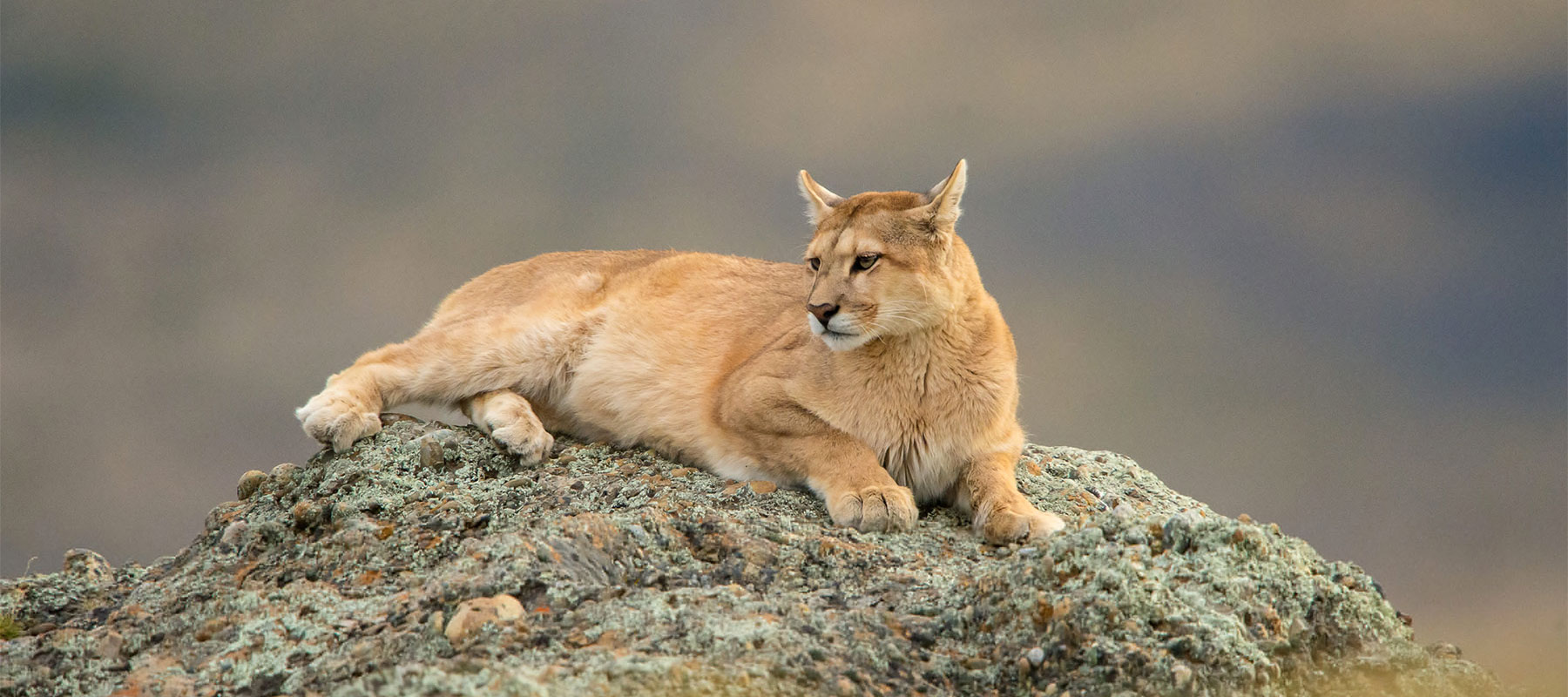ABOUT THE COUGAR
Living with Cougars
Living safely with cougars is a realistic and achievable goal, but it is entirely dependent on us. With the right knowledge and a better understanding of cougar behavior, you can ensure that your family and pets can live and recreate safely in cougar country. On our website, you will find a variety of educational resources, including facts about cougar behavior and safety tips.
A fortunate few catch a glimpse of a cougar, or what they think is a cougar. Did you see one?
Cougars are elusive animals that typically avoid contact with humans and even other cougars. Nevertheless, correctly identifying a cougar in your area can keep both you and the cougar safe.
Below are a few links that can help you understand key characteristics of a cougar:
Cougar Tracks: http://www.bear-tracker.com/cougar.html
If you have specific questions about a cougar sighting in your area, please contact local authorities.
Being educated on cougar behavior minimizes risks and can help you act appropriately in the event of an encounter.
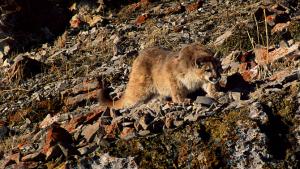
A cougar kitten stalks one of its siblings on Miller Butte, outside of Jackson, WY© Tom Mangelsen
By nature, cougars are elusive and reclusive, preferring to avoid contact with humans at all costs. In fact, upon seeing a human, cougars usually run. At the same time, cougars have a curiosity not unlike that of house cats. The possibility of triggering this curiosity should reinforce the necessity of taking caution when living or recreating in cougar country. Understanding the behavior of cougars can greatly minimize the potential of coming into contact with one of nature’s keystone species.
Lion attacks are extremely rare. Since 1890, only twenty people have been killed as a result of an attack. While these deaths are tragic, National Safety Council statistics show that there are many other things we encounter on a daily basis that are much more likely to lead to fatalities. For example, compare the twenty cougar-related deaths over the last 116 years to the twenty-three people who died from dog bites in 2003 alone. Even more common are car accidents. In 2002, there were 48,366 transportation related deaths.
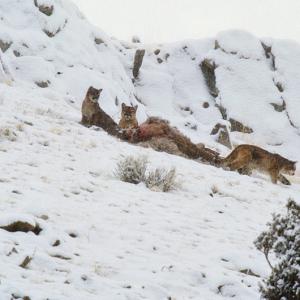
A cougar family on an elk carcass outside of Jackson, WY.
While the statistics reinforce how unlikely cougar attacks are, we recognize that some people live or recreate in habitat where encounters may be more likely. Fears can be eased with a better understanding of these environments. For instance, most urbanites lock their doors and view this action as common sense. Why? Locking doors to protect yourself and your property only becomes common sense after gaining knowledge and assessing the risks of the environment within which you live.
Similarly, if you are going to buy or build a home or recreate in a place where cougars and other wild animals live, you need to learn about their behavior and habits and learn how to act responsibly in this environment. There are many tips and safety measures for living and recreating in cougar country, as well as people/organizations to contact if an encounter is a serious public safety concern.
Much of what you can do to coexist with the cougar is founded in education. Knowing your area, the cougars in your area, and what agencies to call to help you properly care for yourself and a cougar in the event of an encounter are simple ways in which you can protect yourself and the cougar.
Being educated about cougar behavior is perhaps your best protection when recreating in the wild.
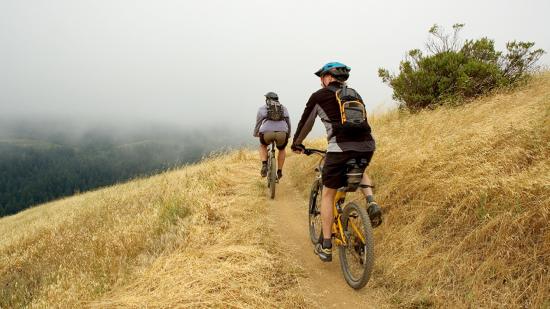
To avoid cougar encounters when recreating in cougar country, avoid the early dawn and late dusk hours.
While statistics reinforce how unlikely cougar attacks are, we recognize that some people live or recreate in habitat where encounters may be more likely. Fears can be eased with a better understanding of these environments.
Learn more about Cougar Behavior and download our Cougar Facts & Safety Tips sheet. Following are some suggested tips for recreating in cougar country and people/groups to contact if an encounter is a serious public safety concern:
Guidelines for Recreating In Cougar Country
- Learn about the places and wildlife living where you hike, bike, ski, and climb. Be especially alert when recreating at dawn or dusk, which are peak times for cougar activity.
- Consider recreating with others. When in groups, you are less likely to surprise a lion. If alone, consider carrying bear spray or attaching a bell to yourself or your backpack. Tell a friend where you are going and when you plan to return. In general cougars are shy and will rarely approach noise or other human activities.
- Supervise children and pets. Keep them close to you. Teach children about cougars and how to recreate responsibly. Instruct them about how to behave in the event of an encounter.
- If you come into contact with a cougar that does not run away, stay calm, stand your ground and don’t back down! Back away slowly if possible and safe to do so. Pick up children, but DO NOT BEND DOWN, TURN YOUR BACK, OR RUN. Running triggers an innate predatory response in cougars which could lead to an attack.
- Raise your voice and speak firmly. Raise your arms to make yourself look larger, clap your hands, and throw something you might have in your hands, like a water bottle. Again, do not bend over to pick up a stone off the ground. This action may trigger a pounce response in a cougar.
- If in the very unusual event that a lion attacks you, fight back. People have successfully fought off lions with rocks and sticks. Try to remain standing and get up if you fall to the ground.
- If you believe an encounter to be a valid public safety concern, contact your state game agency and any local wildlife organizations.
A few simple considerations can help you and your family live safely in mountain lion country.
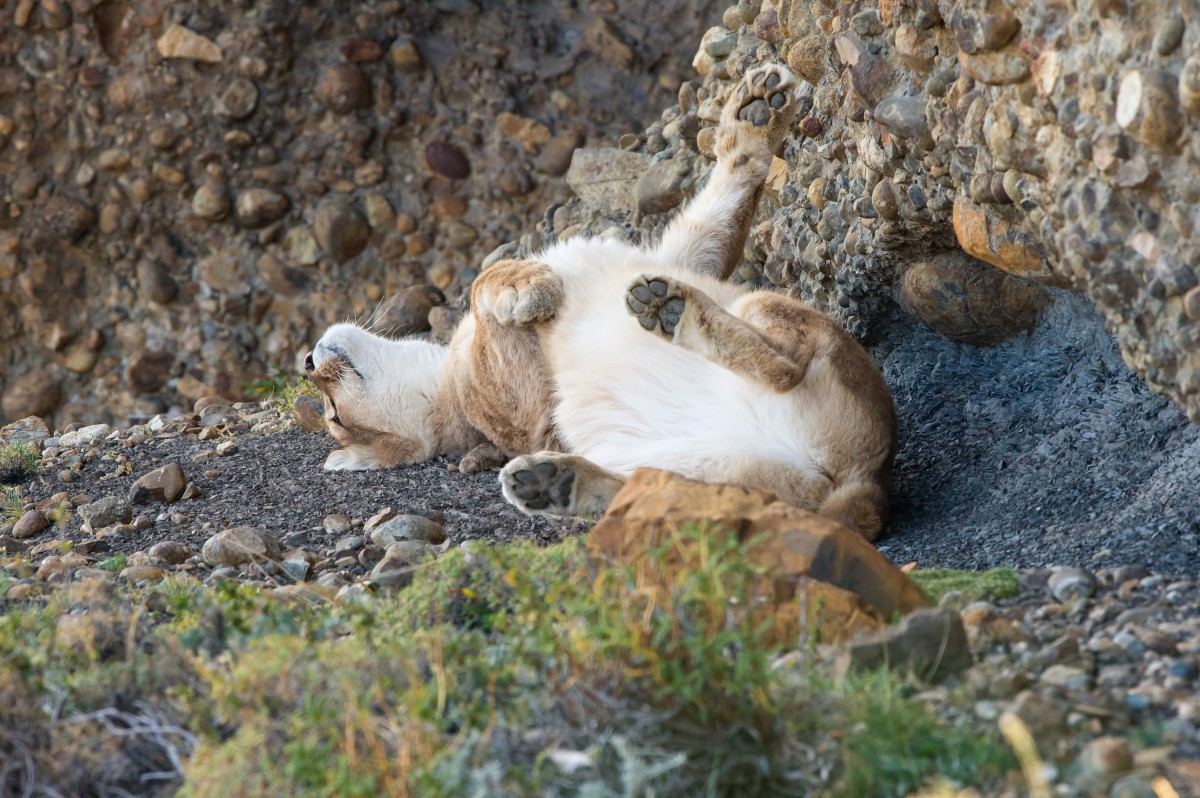
From supervising children to landscaping wisely, there are many steps you can take to live safely in cougar country.
While many statistics reinforce how unlikely mountain lion attacks are, we recognize that some people live or recreate in habitat where encounters may be more likely. Fears can be eased with a better understanding of these environments.
Learn more about Cougar Behavior and download our Cougar Facts & Safety Tips sheet. The following are some suggested tips for living in cougar country, and people/groups to contact if an encounter is a serious public safety concern:
Guidelines For Living In Cougar Country:
- Be aware of your surroundings. Cougar’s on average have a range of 100 square miles; therefore, the chance of there being more than a few cougars in your area are slim. Contact your state game agency and learn about the wildlife in your area. Talk to your neighbors.
- Install outside lighting. Movement activated lights placed where you walk are particularly helpful.
Supervise children, especially during dawn and dusk. Educate them about wildlife and how to behave if they encounter a cougar. Do they know who to call if they see a cougar? - Landscape wisely, making sure it does not attract deer or other cougar prey; consider deer-proofing your yard and/or garden. Prune dense vegetation which cougars may use for cover.
- Do not feed wildlife so as to not attract cougar prey. In some places, bird seed will attract animals that cougars may prey upon.
- Remember, if you live in or near cougar country where there are deer, there could be a cougar. The winter months in northern climates can concentrate prey such as deer. Be alert when recreating in known prey winter ranges, particular where visibility may be restricted by vegetation.
- Keep pets secure. Roaming pets are easy prey. Do not leave their food outside as it may attract racoons. Again, cougars follow prey. Store all garbage securely.
- Protect, fence and shelter livestock. Place in enclosed sheds or barns at night.
- Know who to call if you see a cougar and understand their policy on treatment of cougars that have been documented in residential areas.

